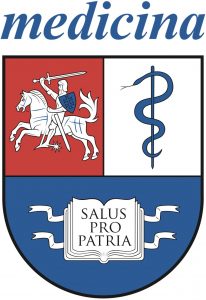Publications

The Effects of Cervical Mobilization with Clinical Pilates Exercises on Pain, Muscle Stiffness and Head and Neck Blood Flow in Cervicogenic Headache: Randomized Controlled Trial
Authors: Meltem Uzun 1, Mehmet Ali Ikidag 2, Yasemin Ekmekyapar Firat 3, Nevin Ergun 1, Turkan Akbayrak 4
Affiliations:
- Department of Physiotherapy and Rehabilitation, Faculty of Health Sciences, SANKO University, 27090 Gaziantep, Turkey
- Department of Radiology, SANKO University Hospital, 27090 Gaziantep, Turkey
- Department of Neurology, Faculty of Medicine, SANKO University, 27090 Gaziantep, Turkey
- Faculty of Physical Therapy and Rehabilitation, Hacettepe University, 06100 Ankara, Turkey
Journal: Medicina - May 2024, Volume 60, Issue 6, Article no. 852 (DOI: 10.3390/medicina60060852)
-
Field & Applications:
- Medical
- Treatment evaluation
- Physiotherapy
- Musculoskeletal disorder
- Balance / Postural control
Background and Objectives: Physiotherapy approaches are used to eliminate the problems caused by cervicogenic headache (CHA), known as secondary headache associated with the structures of the upper cervical region. This study aimed to investigate the effects of cervical mobilization (CM) with clinical Pilates exercises (CPE) on pain, muscle stiffness and head–neck blood flow in CGH.
Materials and Methods: A total of 25 patients participated in this randomized controlled study and were randomized into either the CM group or the CM+CPE group. All treatment methods were applied 3 days a week for 6 weeks. The outcome measure was headache intensity and frequency, the number of analgesics, muscle stiffness and vertebral artery (VA) and internal carotid artery (ICA) blood flow. Headache intensity was measured by a visual analogue scale, muscle stiffness by a myotonometer and blood flow by Doppler US. Evaluations were repeated after 6 weeks of treatment. Within-group comparisons were made by the Wilcoxon signed rank test, and between-group comparisons were made by the Mann–Whitney U test.
Results: After treatments in the two groups, headache intensity and frequency and the number of analgesics decreased, the muscle stiffness of the suboccipital, upper trapezius and sternocleidomastoid (SCM) muscles decreased, and the blood flow of the ICA and VA increased (p < 0.05). There was a significant difference between the groups in terms of headache intensity (p = 0.025) and muscle stiffness in SKM (p = 0.044) in favor of the CM+CPE group.
Conclusions: Non-pharmacological treatment approaches have an important role in CHA related to the upper cervical region. This study suggests that it would be beneficial to add CM in combination with CPE to the non-pharmacological treatment of patients with CHA.
Keywords: cervicogenic headache, neck, musculoskeletal diseases, blood flow, Pilates-based exercises
It is impossible to ignore the increase in neck and cervical disorders due to modern lifestyles and the use of technological devices, and cervicogenic headache is one of these disorders with an increasing incidence. The increase in the use of analgesics, especially for chronic musculoskeletal pain, represents a significant burden on the healthcare system. In addition, given the negative effects of long-term analgesic use, it is important to develop alternative approaches to pain relief in terms of human health. Our study contributes to the literature by investigating the effects of CM and CPE in combination with CM on pain, muscle stiffness and cervical blood flow in CHA and offers alternative solutions. Studies on the long-term effects of specific exercise programs and manipulative treatment approaches applied to CHA are needed.
In summary, alternative approaches in the management of musculoskeletal pain are important for the health systems of countries. In patients with CHA, CM was found to reduce headache intensity, headache frequency, the number of analgesics used and neck muscle stiffness and increase neck blood flow. It was concluded that CM and CPE together may be more effective in reducing pain intensity and muscle stiffness. It was suggested that it would be beneficial to add these interventions to the treatment plans of patients with CHA.


